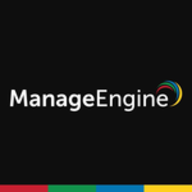

Spiceworks and ManageEngine ServiceDesk Plus compete in the IT service management category. Spiceworks seems to have the upper hand in cost-effectiveness due to its free access to various features, while ManageEngine ServiceDesk Plus offers extensive functionalities but with an associated cost.
Features: Spiceworks provides free access to inventory and helpdesk features, ticketing, and community engagement. ManageEngine ServiceDesk Plus includes ITIL-aligned features, change management, asset tracking, and high customization for complex IT environments.
Room for Improvement: Spiceworks could improve its reporting capabilities, scalability, and robustness of its ticketing system. ManageEngine ServiceDesk Plus users suggest improvements in reporting tools, automation, integration capabilities, and customizable workflows.
Ease of Deployment and Customer Service: Spiceworks is mainly on-premises with straightforward deployment and free community support, but may struggle with large-scale demands. ManageEngine ServiceDesk Plus offers on-premises and cloud options, robust technical support, and direct customer service channels.
Pricing and ROI: Spiceworks is free, ideal for small to medium businesses, resulting in high ROI without licensing costs, though it requires time for setup and maintenance. ManageEngine ServiceDesk Plus has competitive pricing for its features, providing a cost-effective solution for enterprises seeking comprehensive IT management.
For example, previously incidents had to be resolved manually, requiring communication to respective teams via email, but now automatically generated tickets streamline this process while adhering to SLA times, ultimately saving resources.
ManageEngine has been particularly beneficial for small and medium-sized businesses in terms of value for money since they receive similar service at a lower cost compared to ServiceNow.
Their response time could be quicker.
The ManageEngine technical support team deserves a rating of ten out of ten because we receive up-to-date support.
They respond to emails based on time zone considerations.
It is trickier to expand across endpoints with Help Desk.
Scaling ManageEngine ServiceDesk Plus is easy, and I would rate its scalability as nine out of ten.
The tool is suitable for medium to large-scale operations and can be used effectively by mid-size companies.
We have not experienced any significant issues.
We have not faced any stability issues or challenges with this tool.
ManageEngine ServiceDesk Plus has shown stability with no downtime and no major issues identified thus far.
It would be beneficial to have an option to assign approvals to a user group or a variable.
There could be improvements in licensing flexibility, like the ability to use a single license for multiple users simultaneously.
They might consider creating a bundled ERP solution for all these tools where purchasing one license would enable access to all functionalities.
The cost of ManageEngine is more affordable, making it viable for small to medium-sized businesses.
The licensing is based on the number of technicians or analysts providing support as well as the number of IT assets, with no limitation on adding IT assets in ManageEngine ServiceDesk Plus.
It is not as expensive as ServiceNow, which has a very high cost.
The best features ManageEngine ServiceDesk Plus offers for my team include automating manual tasks, which allows whatever tasks we previously did manually to be converted into automatic tasks.
It provides a simpler and more intuitive interface for creating semi-automated use cases and managing problem solutions.
The automation capabilities are good, with the workflow being an integral part of it.
Additionally, it is free software.
| Product | Market Share (%) |
|---|---|
| ManageEngine ServiceDesk Plus | 3.8% |
| Spiceworks | 1.3% |
| Other | 94.9% |


| Company Size | Count |
|---|---|
| Small Business | 32 |
| Midsize Enterprise | 24 |
| Large Enterprise | 19 |
| Company Size | Count |
|---|---|
| Small Business | 24 |
| Midsize Enterprise | 14 |
| Large Enterprise | 10 |
ManageEngine ServiceDesk Plus (MSP) is a comprehensive help desk tool that has built-in asset and project management. MSP can be deployed in the cloud or on premises. The solution enables its users to track configuration changes, map relationships, and view graphical displays of data for more informed decision making.
The two main focus points of MSP are IT request tracking and asset management. MSP’s integrated centralized management console enables technicians and system administrators to efficiently resolve complex issues and keep track of their organization’s needs and ensure constant availability.
With MSP's automation of multiple service desk processes, you can easily save time by automating repetitive and simple tasks such as task assignment, notifications, and categorizations. The automation of multiple processes helps reduce errors and lower costs while ensuring a fast turnaround of ticket handling processes.
ManageEngine ServiceDesk Plus Features and Benefits
MSP has a wide variety of features to help you optimize your help desk management:
Reviews from Real Users
MSP stands out among its competitors for a number of reasons. Two major ones are its comprehensive workflow management toolset and the flexibility it offers its users.
Mykola S., head of global IT delivery at Acino Pharma AG, writes, “CMDB as a baseline, incident management, service request management, and license management are valuable features. It offers really interesting features for complete use in an enterprise. You have one platform, and you could set up different service functions for HR, engineering, or another team in the same platform.
We monitor all Help Desk Software reviews to prevent fraudulent reviews and keep review quality high. We do not post reviews by company employees or direct competitors. We validate each review for authenticity via cross-reference with LinkedIn, and personal follow-up with the reviewer when necessary.